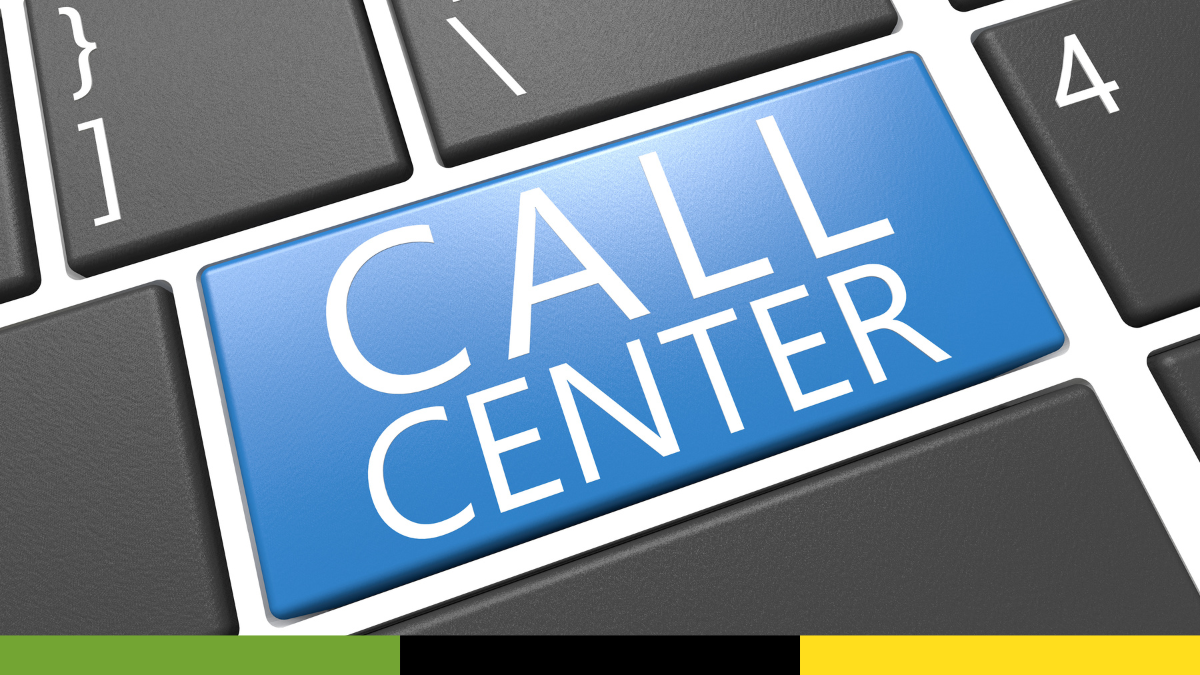How to use social media for business – check it out before you start!

We live in times where the simplest way to reach another person is through the Internet. Its development has also brought about the evolution of social media. Who among us doesn’t remember MySpace or Friendster? These virtual spaces allowed us not only to engage in hours of conversation but also to share photos, thoughts, and publish our own posts in groups. Social media has been an important part of our daily lives for years.
Breakthrough came with the creation of Facebook. Its subsequent updates enabled the publication of text along with attached graphics, short videos, and even live streaming. The number of profiles grew at an astonishing pace day by day. Facebook allowed the creation of company accounts, fan pages, and through Facebook Ads (Facebook’s advertising system), it enabled running advertising campaigns.
Nowadays, vast majority of the society uses social media. Many new popular social media platforms arose, covering variety of society segments. Which is the best social media platform? What are ways to use them? Relax and read our guide to social media.
What are the benefits of social media for business?
Each of us can list at least a few social media platforms on which we have accounts today. In today’s world, a company’s presence in the social network is almost obligatory. A social media profile has become, alongside your website, the organization’s business card. Both large corporations and small businesses have been managing their social media for years. Every new business owner entering the market checks off the largest social media platforms like Facebook and Instagram. Large corporations can create the appearance of being closer to customers through social media and maintain a positive company image online. On the other hand, smaller businesses have the opportunity to showcase their activities to a wider audience.
Once it was said, “Don’t have a Facebook account? That means you don’t exist.” This saying is also justified for companies, “Your company isn’t on Facebook? That means it doesn’t exist.” In the 21st century, the Internet has become a second reality, and if your business doesn’t exist in the social network, it is invisible not only to potential new customers but also to potential partners with whom you planned to start cooperation.
Having a company profile or channel on various social media platforms brings many benefits. You become visible to your target audience, can communicate with them, check and respond to their needs, consider changes that, after in-depth analysis, will impact your brand recognition. You can create your own community that identifies with your company and supports it, for example, by purchasing products or services.
Through the social media presence and advertising, you can reach potential customers – people who do not yet know you and your business and/or people who are not yet convinced of it. You can completely change your company’s image and how it is perceived in the local or global market. Finally, social media allows you to interact with other companies. Through promotion and reach, you become noticeable as a brand in the market, attracting subcontractors or new clients to collaborate with you.
Use social media for customer service or advertising?
It’s impossible to provide a definitive answer to the titular question. On social media platforms, both customer service and advertising are inextricably linked. Marketing agencies and departments have ample room for creativity when it comes to creating posts. It’s important to remember that your company’s account is visited by both potential followers and potential clients. Therefore, the approach should be based on both advertising and customer service. Effective marketing will attract more supporters to your brand, while establishing positive customer relationships will retain them.
How to plan your social media strategy? Here are some social media tips
In social media, you can operate independently or create a department to handle it. If you’re not a professional but want to effectively manage your social media channels, you can outsource social media management to an external agency. If you’re doing this work on your own, you need to familiarize yourself with several aspects you may not have known about before. There are a few key principles to focus on when starting your journey with successful social media:
Read more: Contact Center Outsourcing – Does it Bring Value to Your Company?
Consistency
Consistency makes your brand more credible. Long gaps in posting can lead to uncertainty among your customers about whether the company is still in business, and if so, whether everything is functioning properly and why there’s irregularity.
Another aspect of consistency is posting in accordance with the algorithm of a specific social platform. Consider how it works, how specific content is promoted, how popular certain hashtags are, and how individuals or companies that maintain consistency are perceived. If you publish in a similar manner, you send a signal to the algorithm to promote your business and posts.
Communication with followers, it’s the individual that counts, not the mass.
Communication with the audience is incredibly important. They value the opportunity to directly contact a representative of the brand. It’s much easier to retain a customer who sees interest from the brand in their issue. A quick response to a comment or question will make the customer feel noticed and appreciated. Remember to provide your customers with the opportunity to leave comments on posts, use direct messages, or engage in chat.
What if you have too many followers to respond to every comment? There are several solutions; you can hire someone to help with responses. You can also use professional external companies or agencies. A good choice here is a Call Center that specializes in back-office customer support. Remember that it’s better to have 100 engaged customers than 1000 followers who have no interest in your brand at all. Although the first group is significantly smaller, it can provide you with better sales results. They indirectly promote your brand by fitting within the algorithm’s framework, such as reacting to your post, sharing its content, repeating hashtags, or leaving comments.
Content plan
The most crucial aspect is creating a good content plan, a publication plan. It should be based on market analysis, both from an advertising and a social perspective, and the type of platform on which you intend to share your created content. Your actions on social media should form a coherent whole. The message your brand conveys can determine its success or failure in business.
Remember that when creating posts, you are creating them for the audience, not for yourself. Look for solutions that will interest the market, not just you. Customers should feel that you are creating something especially for them.
There are several principles to consider when creating content. It should be valuable to the target audience. Choosing the right social media platforms to publish your posts is equally important. It’s crucial to know what the current trends are and stay up to date with the changing market. Therefore, it’s worth keeping an eye on the market and observing the approach the competition has chosen to reach customers.
Social channels and platforms selection
Your marketing efforts should primarily focus on selecting the right social media platform. Not every medium will positively impact your company’s image and grow your business. If you are targeting an audience aged 50+, you must remember that some channels and their corresponding advertisements or posts may seem unserious and have a negative impact on your company’s image. It’s important to manage social media in line with current trends, so you know what attracts your audience and on which platforms you will find the largest number of them.
Prediction
If you can predict how many customers a post you create will bring, you will eventually know how many posts to publish, how frequently, and on which platforms. If your company’s profile is followed by around 10,000 people, approximately 1,000 of them will be active individuals, and you must keep them in mind when creating content. Followers do not necessarily translate into transactions. You need to familiarize yourself with your audience, engage with them. You can choose a communication tool for this purpose, such as a messenger or provide an email address for contact, where interested parties can leave messages or use the live-chat option.
Read more: Chatbot vs live chat. What is the optimal choice?
Creativity
Remember to surprise your audience. If, for example, you post photos from a photo session, you have a limited number of them. Over time, you will need to edit them for reuse or repeat the session. The audience craves something new, fresh, unique. Repetition on social media leads to loss of interest.
Monitor Statistics
At the beginning of your journey, you can track how many posts you’ve made and how often. Then, you’ll be able to check the number of views, followed by identifying which content is the most and least popular, and eventually how many times your post has been shared by others. Statistics will make it easier for you to plan effective publication schedules.
Is it worth being present on all social media platforms?
More doesn’t always mean better. This is a principle that also applies in this case. Over the past few years, a “typical” audience for specific social media platforms has emerged. Decide on which platforms you will attract the largest number of users who follow and support your online activities. However, remember to choose the platform that suits the content you create and your target audience.
The most popular and one of the oldest social media platforms is Facebook, but despite having over 1.7 billion users, it is slowly being overshadowed by other platforms. Nevertheless, use Facebook if you would like to reach the largest audience.
Another popular social media channel is Instagram is only 12 years old, but as of January 2020, it was ranked as the fourth most commonly used communication platform. Instagram was created for sharing life moments captured in photos. Over the years, it has expanded to allow the sharing of short videos and ads.
Generation Z is more likely to use TikTok, which was created 6 years ago in China and acquired the similar platform Musical.ly, making a strong entry into the social media market. TikTok allows for the posting of short videos and offers paid advertising options.
Meetup and LinkedIn are platforms focused on professional networking, providing chat communication and advertising opportunities.
YouTube is a unique medium; while it offers communication tools, it is primarily associated with videos, advertisements, and more recently, short videos similar to those found on TikTok. YouTube and Instagram attract consumers due to the presence of popular and influential individuals, known as “influencers.” These individuals often engage in collaborations and can promote your product on their accounts, becoming the face of your brand.
Which platforms to choose?
The abundance of social media platforms allows for flexible choices. However, keep in mind to tailor your message to the audience and the platform to the product. Think about what you want to achieve and who will be managing the actions: you or an external agency. Choose wisely; more doesn’t necessarily mean better. Consider whether you also plan to provide customer service. Advertising may work better on Instagram or YouTube, but for customer contact, you can choose live chat or Facebook Messenger.
When selecting a platform, remember the content pyramid. What is it? It involves creating various posts from a single piece of content and attracting audiences through shares and recommendations.
For example, by uploading a multi-minute video ad on YouTube, create a teaser that you can share with your audience on Facebook as a post and as stories on Instagram. This multichannel way, you reach multiple groups in several places. The time spent on one platform allows you to make use of similar content on several others. In this way, on the YouTube platform, your video will be seen by 1,000 viewers, your teaser on Facebook will be seen by approximately 750, and your Instagram stories will reach about 500. If 10% of viewers from each platform recommend you to a few more people, you gain additional fans, and they will recommend you to more people, and so on.
Read more: The Differences Between Multichannel and Omnichannel in a Call Center
What tools to use for your social media marketing?
Once you know what content you’ll offer to your followers and have decided on the communication channels to use, you can prepare the appropriate tools for them. Start with a good planner. You can categorize your work, record dates, ideas for future posts, goals you want to achieve, comments, or questions you want to answer. Even the simplest planner created in Excel is a tool that will help you stay organized. You can also record changes that occur over weeks or months. There is a huge selection of planner apps available; you can use the one recommended by your app store on your phone or find many apps online through Google.
Also, remember that each social media platform has its own rules, and sometimes creating content for each one separately can take too much time. You can create one piece of content and adapt it for each platform.
For creating graphics, tools like Canva, Photoshop, Lightroom, and Gimp work best. In recent years, infographics called carousels have gained popularity. These are graphics in the form of slides that, when scrolled one after another, form a whole. You can use a ready-made template in a graphics program like Canva for this purpose. They already have layouts designed for platforms you can use on Instagram. You can also use tools like PowerPoint or Keynote for this purpose.
For video editing, the following tools work best: Avid Media Composer First, HitFilm Express, iMovie, DaVinci Resolve, Adobe Premiere, and many others.
Ultimately, it’s up to you which tools you choose to use. Free versions of some programs may have limited capabilities, but for the purposes of the social media mentioned in the article, they are sufficient. If you’re considering purchasing a paid version of a program, check whether it offers a trial version or a monthly subscription that you can test. Often, buying a program or an additional tool can be a significant expense, but what you need to invest is primarily time to learn how to use it.
Most common mistakes when you use social media.
Avoid these mistakes!
- Lack of attention to the audience, excessive focus on the brand (on oneself), and too little on the customer. We build a community on social principles, not sales principles. Give people specifics, not mindless posts. Think about what your audience needs, not just what you need to sell.
- Lack of skills in using tools and utilizing the options provided by social media platforms for business accounts. For example, the ad manager is not just for publishing paid posts or “boosting posts.” It is primarily a tool that allows for precise planning of publications by identifying the target audience, their interests, and the timing of publication. Sometimes, when a platform introduces a new tool, it wants to test it first. Often, this tool is initially tested on a small group of users, those whom the algorithm has identified as the ones who most frequently use various tools
- Failure to align the social media community with the overall marketing strategy. Random posts to random people, thoughtless actions. Also, remember the values you want to convey to your audience. Watch out for a lack of fresh ideas, a lack of creativity, and language that is either too elaborate or too basic for a specific group.
Social Media Algorithms – a good friend or a silent killer?
The algorithm operates according to predetermined mechanisms, and it’s worth understanding them before diving into social media because it determines the reach of your post. We can compare the algorithm to artificial intelligence, which is tasked with delivering content and posts to users based on predefined categories and values. The algorithm rewards consistency; if you consistently post, it will promote your content. The algorithm will hide inappropriate content, such as nudity, profanity, or political incorrectness, while promoting content that gains many views and likes quickly. The algorithm also values engagement from your audience, so it’s better to have a small, engaged group of followers who comment and share your content than thousands who never interact with your posts. The algorithm serves as an excellent metric because it operates automatically, allowing you to compare the effectiveness of your actions by analyzing your own publications from different periods.
Is managing social media for business difficult?
There’s no definitive answer to this question. Handling different social platforms may feel more comfortable for someone who is up to date with them, follows trends, has conducted market research, and prepared a solid content plan. Being creative, organized, and having skills in basic photo and video editing programs can definitely make the job easier.
However, if you don’t feel confident in this field, you can always delegate this work to professionals. You can provide them with the key guidelines, and they can manage your social media accounts based on that. Moreover, if you want to handle your customers who contact you through social media and other communication channels, you can utilize the services of a call center specializing in back-office customer support.
At CCIG Group, we have been supporting small, medium, and large companies in professional, 24/7 remote customer service in multiple languages for over 20 years. Click to learn more about our capabilities in social media customer service outsourcing!



